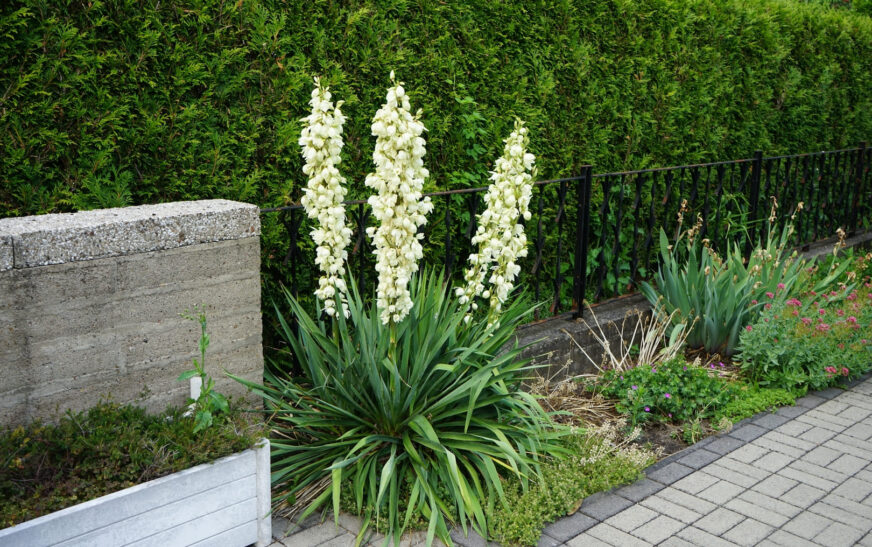Gardening is a rewarding endeavor that enhances the beauty of our homes and provides a sense of tranquility. However, not all plants are benign; some can pose significant risks to your garden, property, and personal well-being. Horticulturists and gardening experts caution that certain plants can cause damage beyond mere aesthetics. In this article, we’ll explore the harmful effects of these plants, how they can impact your garden and home, and steps to mitigate their risks.
Plants That Can Damage Your Garden
Certain plants can be particularly problematic for garden health, leading to various issues that can affect the overall vitality of your garden. Key examples include:
- Japanese Knotweed (Fallopia japonica): Known for its rapid and aggressive growth, Japanese knotweed can quickly overrun garden spaces, displacing native plants and causing structural damage to buildings. Its extensive root system can penetrate foundations, paving, and drainage systems, leading to costly repairs.
- Bindweed (Convolvulus arvensis): Bindweed is a persistent and invasive weed that can strangle and smother garden plants. Its aggressive nature makes it difficult to control, as it can wrap around other plants and choke them, reducing their access to light and nutrients.
- Giant Hogweed (Heracleum mantegazzianum): This plant is not only invasive but also poses health risks to gardeners. Its sap contains compounds that can cause severe skin irritation and burns when exposed to sunlight. Giant hogweed’s rapid growth can also outcompete native vegetation, leading to reduced biodiversity.
Risks to Your Home
Some plants can pose a threat to the structural integrity of your home. Here are a few examples:
- Wisteria (Wisteria sinensis): While wisteria is admired for its stunning, cascading blooms, its vigorous growth can be problematic. The plant’s thick, woody vines can damage trellises, fences, and even the exterior walls of buildings. Over time, the weight and growth of wisteria can lead to structural issues if not properly managed.
- Ivy (Hedera helix): Ivy is known for its climbing ability, which can lead to extensive damage if it is allowed to grow unchecked. It can infiltrate and damage masonry, roof tiles, and gutters. Ivy’s growth can also exacerbate damp issues, as it can trap moisture against building surfaces, leading to potential mold and decay.
- Pyracantha (Pyracantha coccinea): Commonly known as firethorn, pyracantha is a shrub with sharp thorns that can cause damage to fences, walls, and garden structures. Its aggressive growth and thorny branches can also pose a risk to people and pets.
Impact on Personal Well-being
Certain plants can affect human health and well-being, making it essential to be aware of their potential risks:
- Oleander (Nerium oleander): Oleander is a highly toxic plant, with all parts—leaves, flowers, and stems—containing potent toxins. Ingesting any part of the plant can lead to serious health issues, including nausea, vomiting, and cardiac arrest. This plant poses a significant risk, especially in gardens where children or pets may come into contact with it.
- Castor Bean (Ricinus communis): The castor bean plant produces seeds that contain ricin, a highly toxic compound. Ingesting even a small amount of seeds can cause severe poisoning, with symptoms ranging from abdominal pain to organ failure. Castor bean plants should be handled with caution, particularly in gardens frequented by children or pets.
- Poison Ivy (Toxicodendron radicans): Poison ivy is notorious for causing skin irritation and allergic reactions. Contact with its leaves or stems can result in itchy rashes and blisters. Proper handling and avoidance are crucial for those who are sensitive to this plant.
Mitigating the Risks
To minimise the risks associated with harmful plants, consider the following strategies:
- Research Before Planting: Always research plants before adding them to your garden. Understand their growth habits, potential risks, and how they might impact your home and health.
- Regular Maintenance: Regularly inspect and maintain your garden to manage invasive and potentially harmful plants. Promptly remove any problematic plants to prevent them from spreading.
- Protective Measures: Use protective gear when handling plants known for causing skin irritation or toxicity. Educate family members, especially children, about the potential dangers of certain plants.
- Consult Experts: Seek advice from horticulturists or gardening experts if you are unsure about the safety of specific plants. Professional guidance can help you make informed decisions and manage your garden effectively.
Conclusion
While gardening offers many benefits, it is essential to be aware of the potential risks posed by certain plants. By understanding the harmful effects of these plants on your garden, home, and personal well-being, you can take proactive measures to ensure a safe and healthy gardening experience. With careful planning and informed choices, you can enjoy the beauty of your garden while safeguarding your property and health.













